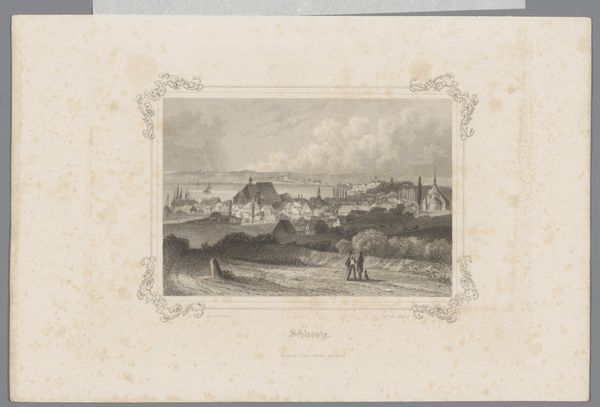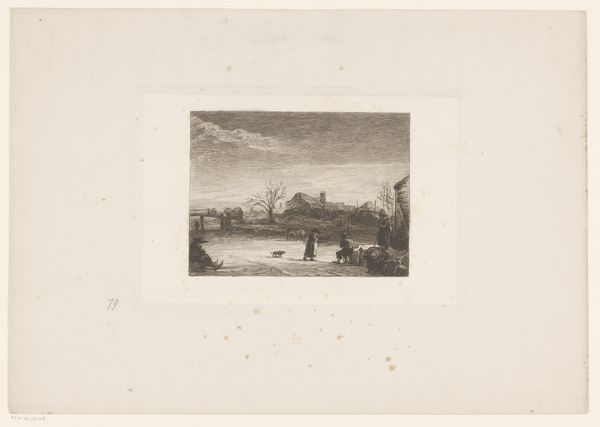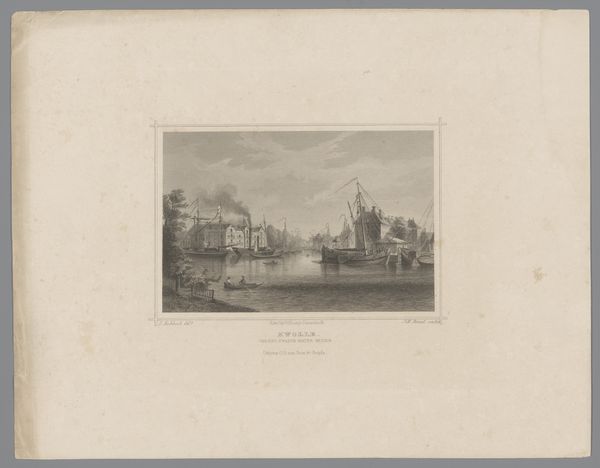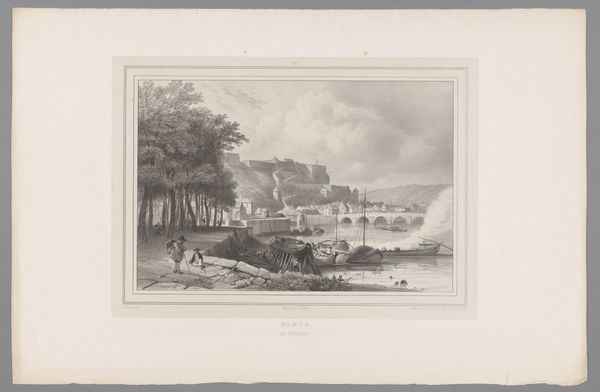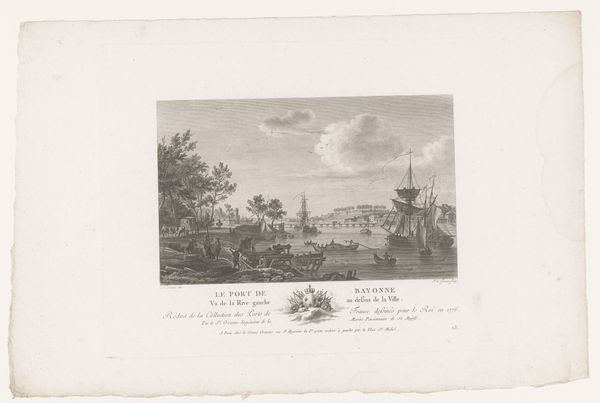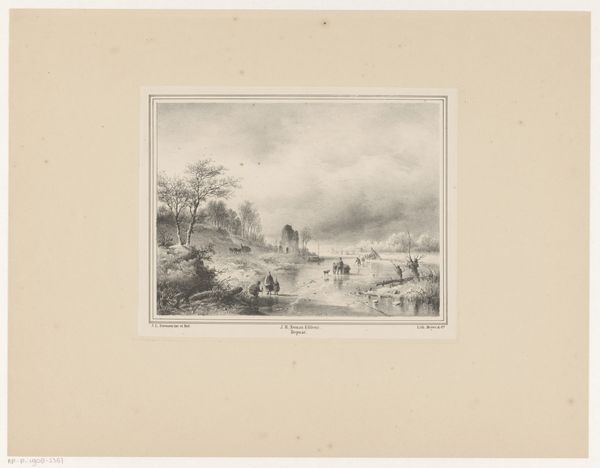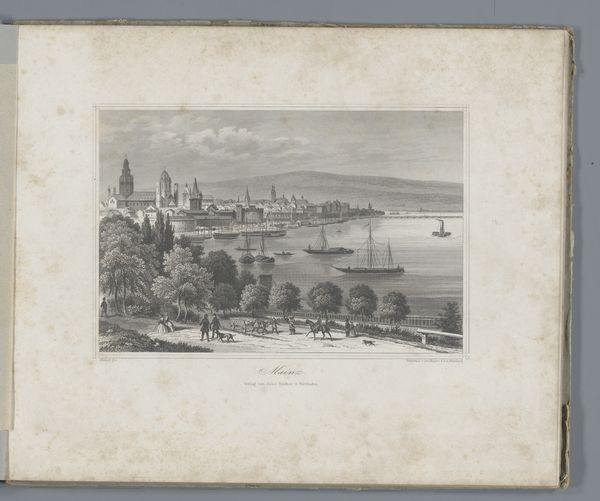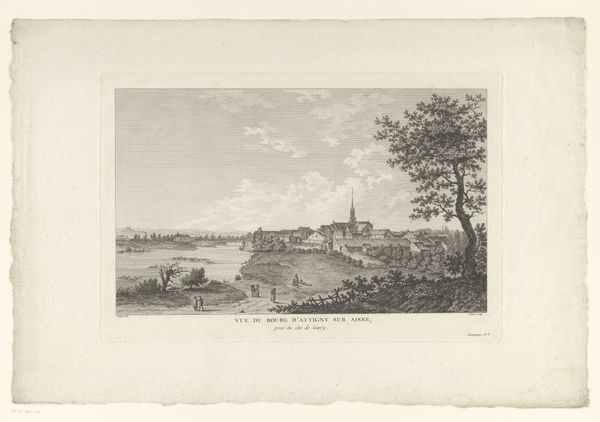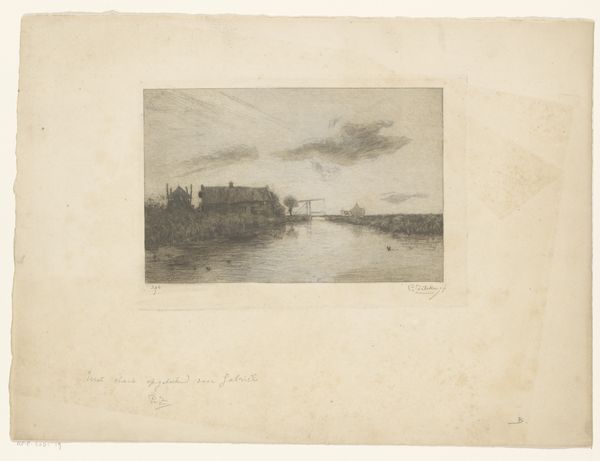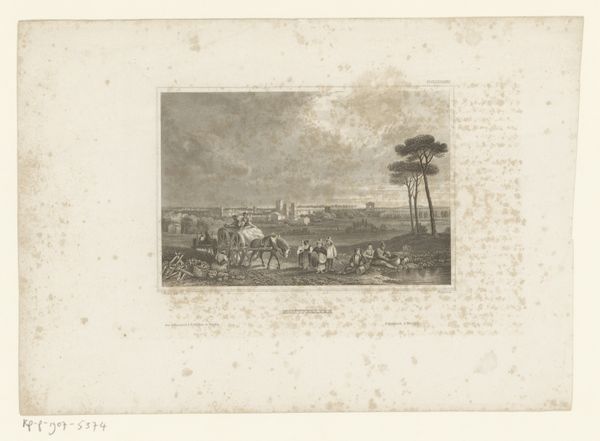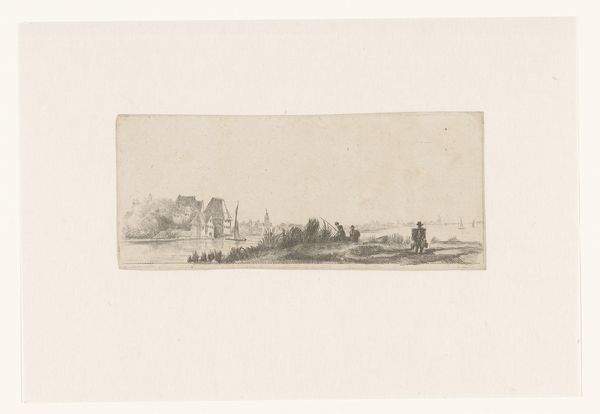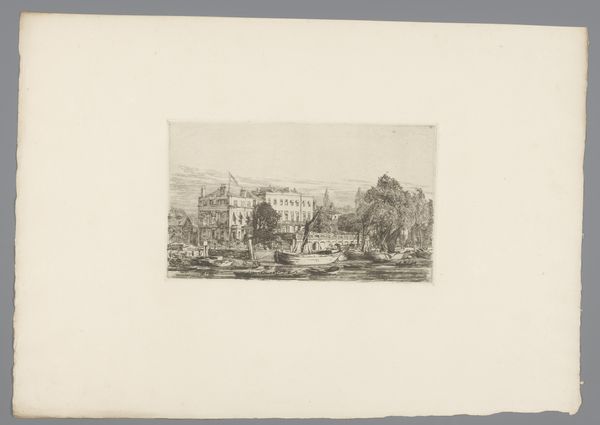
print, etching, engraving
# print
#
etching
#
landscape
#
romanticism
#
cityscape
#
engraving
Dimensions: height 193 mm, width 142 mm
Copyright: Rijks Museum: Open Domain
Georg Michael Kurz made this print of Plön in the mid-19th century. The image shows a tranquil view of the town with figures relaxing in the foreground. However, it's worth asking what kind of social and institutional work is being done here. This is Germany in the Biedermeier period, an era defined by its turn away from political radicalism and toward domesticity. With its pleasing composition and the implication of leisure, this work may be an attempt to define civic identity in terms of apolitical values. The decorative border furthers this sense of retreat into the private sphere. However, the image's institutional context is important. Kurz was a printmaker, meaning that his work was reproducible and widely available. So, while it may seem conservative, its public nature could have allowed it to subtly influence the way people saw themselves and their place in the world. To fully understand the image, one could research the history of Plön itself, as well as the institutions that supported printmaking at the time. Art is always made in specific social contexts, and understanding those contexts is crucial to understanding the art itself.
Comments
No comments
Be the first to comment and join the conversation on the ultimate creative platform.

